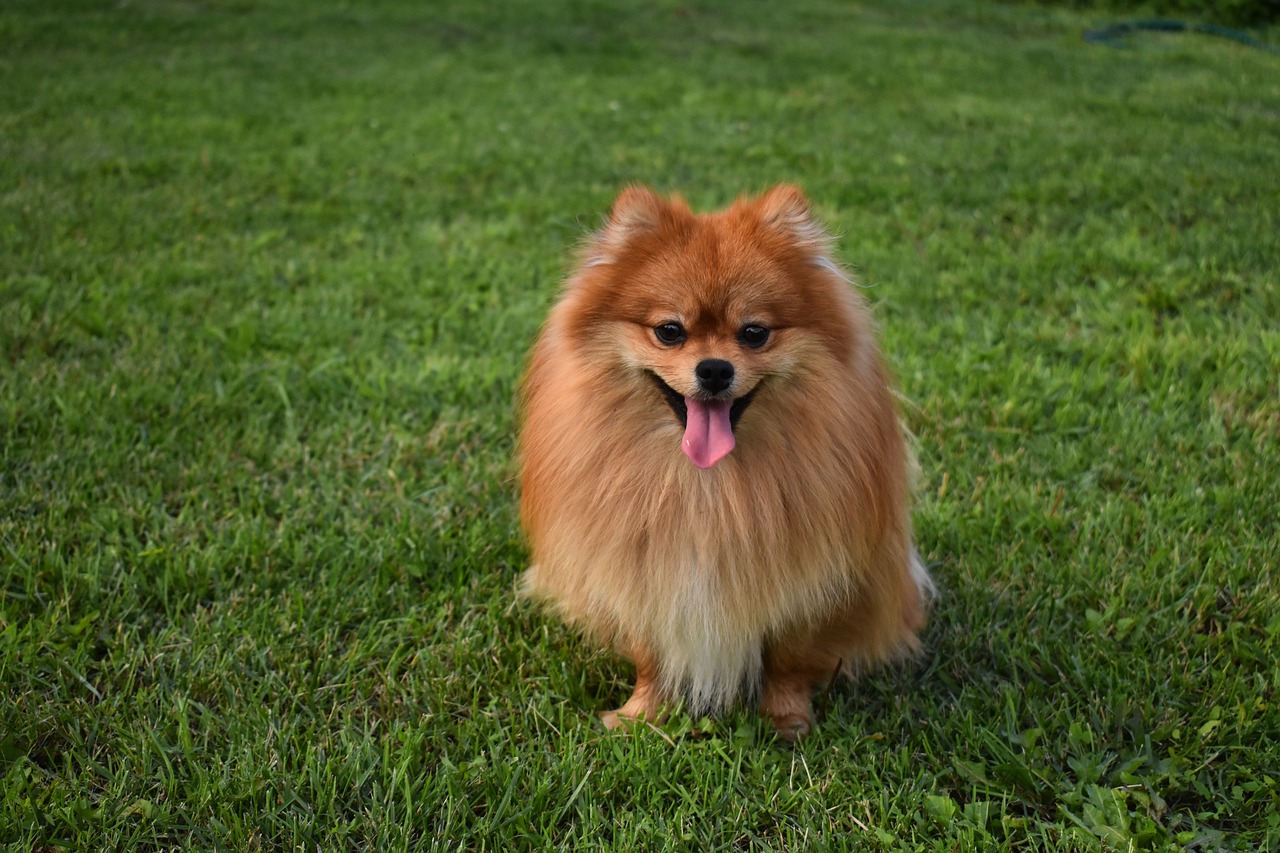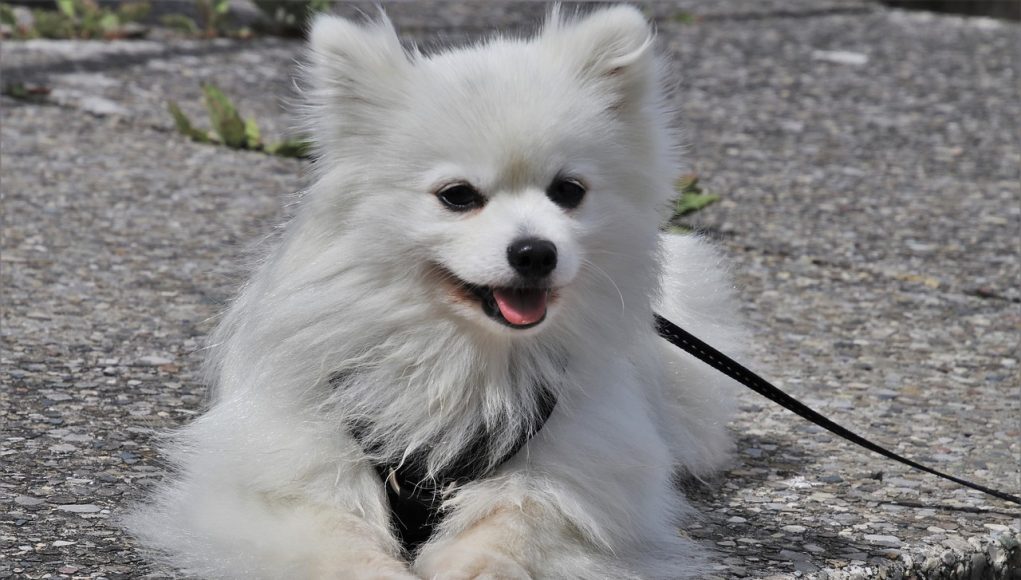The Pomeranian, often referred to as the « Pom, » is a small and lively breed known for its fluffy coat and bold personality.
Despite its tiny size, the Pomeranian carries itself with confidence and charm, making it one of the most popular toy breeds worldwide.
Pomeranian : A Complete Guide to This Dog Breed
This article provides a detailed look at the Pomeranian, including its history, physical characteristics, temperament, care needs, and health concerns. Whether you’re considering adopting a Pomeranian or simply want to learn more about this vibrant breed, this guide will provide all the essential information.
The Origins
The Pomeranian descends from larger sled-pulling dogs of the Arctic region. Its name comes from the historical region of Pomerania (now part of northern Poland and Germany), where the breed was developed and refined into a smaller, companion dog.
Over time, Pomeranians became popular in royal courts across Europe, particularly in England, where Queen Victoria’s love for the breed contributed to its popularity. Today’s Pomeranian is significantly smaller than its ancestors, but it retains the lively and energetic spirit of its larger relatives.
Fun Fact: Queen Victoria owned a particularly small Pomeranian named Marco, which helped set the trend for breeding smaller Pomeranians in the 19th century.
Physical Characteristics
Pomeranians are instantly recognizable for their small size and fluffy, voluminous coats. Despite their delicate appearance, they are sturdy little dogs with a bold demeanor. Here’s a detailed look at their physical traits:
- Size: Pomeranians are small dogs, typically weighing between 3-7 pounds (1.4-3.2 kg).
- Height: They stand about 6-7 inches (15-18 cm) tall at the shoulder.
- Coat Color: Pomeranians come in a wide variety of colors, including orange, black, white, blue, cream, and sable. Some may have unique markings or be bi-colored.
- Morphology: Pomeranians have a compact, square body with a fluffy, double coat. Their eyes are dark and almond-shaped, giving them an alert and intelligent expression. Their ears are small, erect, and set high on their head, adding to their fox-like appearance. Their tail is long and plumed, carried high and gracefully over their back.
- Distinctive Features: The Pomeranian’s most distinctive feature is its dense, fluffy coat, which gives the dog its iconic puffball appearance. Combined with its small size and confident stance, Pomeranians have a regal yet playful look.
Comparison: Compared to other toy breeds like the Chihuahua, Pomeranians have a much fluffier coat and a more fox-like appearance. They tend to be more independent and outgoing, while Chihuahuas often form stronger attachments to a single person.

The Temperament
Pomeranians are known for their bold, lively, and outgoing personalities. Despite their small size, they have a confident, sometimes even bossy demeanor, and they enjoy being the center of attention.
- Interaction with Children: Pomeranians are typically good with older children who understand how to handle small dogs gently. However, their small size makes them fragile, so they should always be supervised around younger children to prevent accidental injuries.
- Behavior with Other Animals: Pomeranians can get along well with other dogs and pets, especially if they are socialized from an early age. However, they may sometimes display a « big dog » attitude and try to dominate larger dogs, so proper introductions and supervision are important.
- Training Tips: Pomeranians are intelligent and eager to please, but they can also be independent and stubborn. Early training and socialization are crucial to prevent behavioral issues. Positive reinforcement works best with Pomeranians, and they thrive when given tasks or tricks to learn. Their alert nature also makes them excellent watchdogs, though they may bark excessively if not properly trained.
Care Needs for the Pomeranian
Pomeranians require regular grooming and exercise to stay healthy and happy, despite their small size.
- Coat Maintenance: The Pomeranian’s thick double coat requires regular grooming to prevent tangles and mats. Brushing at least two to three times a week is necessary to keep their coat in good condition, and more frequent brushing may be needed during shedding seasons. Regular baths will help keep their coat clean, and trimming may be necessary to maintain a tidy appearance.
- Exercise Requirements: Pomeranians are small but energetic dogs that need regular exercise to burn off energy. Daily walks and playtime are essential for keeping them fit and mentally stimulated. They are well-suited to apartment living due to their size but benefit from outdoor activities and interactive play.
- Hygiene and Specific Care: Dental care is especially important for Pomeranians, as they are prone to dental problems like tooth decay and gum disease. Regular tooth brushing and dental check-ups are essential. Additionally, their eyes and ears should be cleaned regularly to prevent infections, and their nails should be trimmed as needed.
Common Health Issues
Pomeranians are generally healthy dogs, but like all breeds, they can be prone to certain health conditions. Being aware of these potential issues can help ensure your Pomeranian stays healthy throughout its life.
- Luxating Patella: This condition, where the kneecap slips out of place, is common in small breeds like the Pomeranian. In severe cases, surgery may be required to correct the issue.
- Collapsed Trachea: Pomeranians can be prone to tracheal collapse, which can cause difficulty breathing. Using a harness instead of a collar during walks can help prevent pressure on their neck.
- Dental Issues: Due to their small mouths, Pomeranians are prone to dental problems like tooth decay and gum disease. Regular dental care is essential to prevent these issues.
- Hypoglycemia: Young Pomeranian puppies can be prone to low blood sugar, especially if they miss meals. Feeding small, frequent meals can help prevent hypoglycemia.
- Life Expectancy: Pomeranians have an average lifespan of 12-16 years. With proper care, regular veterinary visits, and a healthy lifestyle, they can live long, happy lives.
Life Expectancy and Quality of Life of Pomeranians
On average, Pomeranians live between 12 and 16 years. Their quality of life depends on regular health care, proper exercise, and attention to their grooming needs.
- Maximizing Quality of Life: To ensure your Pomeranian lives a long and healthy life, provide regular exercise, a balanced diet, and plenty of affection. Dental care, regular grooming, and veterinary visits are essential for maintaining their overall health. Pomeranians thrive in environments where they are included in family activities and given plenty of attention.
Pros and Cons of Owning a Pomeranian
Advantages:
- Pomeranians are small and portable, making them ideal for apartment living and travel.
- They are loyal, confident, and make excellent companion dogs for individuals and families.
- Their fluffy coat is beautiful, and they are hypoallergenic, making them a great choice for people with allergies.
Disadvantages:
- Their thick double coat requires regular grooming and maintenance.
- Pomeranians can be prone to health issues such as dental problems and luxating patella, requiring diligent care.
- Their bold personality may lead to excessive barking if not properly trained.
What to Know Before Adopting a Pomeranian
Pomeranians are best suited for owners who can provide them with the grooming, exercise, and attention they need. They thrive in environments where they are treated as part of the family and given plenty of love. Ideal owners include families, singles, or seniors who can meet their grooming and exercise requirements.
Before adopting a Pomeranian, it’s important to understand the breed’s grooming needs and potential health concerns. Consulting with breeders or rescue organizations can help prospective owners determine if the Pomeranian is the right fit for their lifestyle.
Comparing the Pomeranian with the Shih Tzu
Both the Pomeranian and Shih Tzu are small, fluffy breeds with big personalities, but they differ in key ways. Pomeranians tend to be more independent and energetic, while Shih Tzus are often more laid-back and affectionate. Both breeds require regular grooming, but Pomeranians have a denser double coat, which can require more maintenance.
Conclusion
Pomeranians are lively, confident, and loyal companions that fit well into a variety of living situations. Their small size and bold personality make them excellent pets for individuals and families alike.
However, potential owners should be prepared for the grooming and health care commitments required to keep a Pomeranian happy and healthy.
With proper care, attention, and love, Pomeranians can provide many years of joy and companionship.









